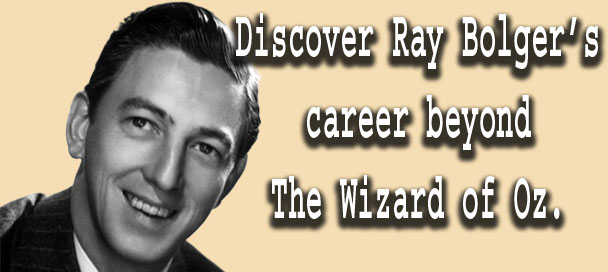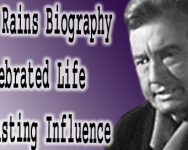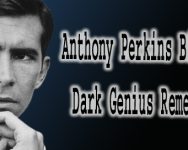💪 Hulk Hogan: The Immortal Icon of Professional Wrestling
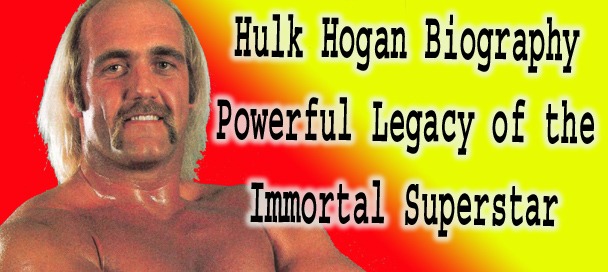
Hulk Hogan in the 1980s.
When you think of professional wrestling, one name towers above the rest Hulk Hogan. With his handlebar mustache, ripped tank tops, and booming charisma, Hogan didn’t just headline events he defined an era. From packed arenas to cereal boxes, his influence stretched far beyond the ring, turning him into one of the most recognizable figures in pop culture history.
Hulk Hogan transcended the wrestling ring to become an icon of American pop culture. His persona raucous, muscular, and unapologetically heroic helped lead WWE into the mainstream during the 1980s. Hogan’s story includes crossover success in film and television, dramatic comebacks, and a complex legacy woven with both triumph and controversy. Today his influence lives on in every wrestler who dares to blend spectacle with persona.
During the 1980s boom of sports entertainment, Hulk Hogan’s name was everywhere. He was the muscle-bound face of the WWF, the flag-waving hero who stood toe-to-toe with giants and villains alike. As crowds chanted “Hogan! Hogan!,” millions of fans embraced the gospel of Hulkamania training hard, saying their prayers, eating their vitamins, and believing in themselves.
But Hulk Hogan. was more than just a catchphrase machine. His ability to connect with fans through sheer presence and theatrical storytelling transformed wrestling into mainstream entertainment. He helped launch WrestleMania into a global event and became the company’s leading man during a time when wrestling was trying to find its place on national television.
He later shocked audiences by reinventing himself entirely, proving that even the most beloved heroes could evolve. Hogan’s story is one of transformation, spectacle, controversy, and resilience all wrapped in red and yellow. He wasn’t just in the spotlight he was the spotlight.
👶 Early Life
Summary: Raised in Florida, Terry Bollea discovered bodybuilding and music before being recruited into wrestling by industry veterans.
Terry Gene Bollea was born August 11, 1953 and raised in Augusta, Georgia, before his family eventually settled in Tampa, Florida. A shy, stocky kid with a deep love for sports and music, he didn’t initially dream of the ring. Instead, he admired baseball legends like Pete Rose and later played bass guitar in several local rock bands, hoping to break into the music scene before life took a very different turn.
Hogan attended Hillsborough Community College and the University of South Florida, but his interest in academics was fleeting. It was bodybuilding and the camaraderie of the local gym culture that began to shape his physical identity. His imposing size and natural charisma drew attention from professional wrestlers, including Jack and Gerald Brisco, who encouraged him to consider wrestling as a career.
In the late 1970s, he began training under Hiro Matsuda a demanding mentor who broke Hogan’s leg on the first day of instruction to test his commitment. Rather than quitting, Hogan returned more determined than ever. The pain and discipline of that early training would serve as the foundation for the character he would soon become: a relentless, larger-than-life force who would eventually take center stage on a global platform.
Explore the Biographies of Iconic Celebrities
Hulk Hogan’s 1985 WWF theme song “Real American” was originally written for The U.S. Express tag team but fans made it inseparable from Hogan himself.
💪 Wrestling Career
Summary: From AWA tag team beginnings to global superstardom with WWF, WCW, and the nWo, Hulk Hogan.’s wrestling career redefined fame in the ring.
📺 Watch This Clip
Hulk Hogan looks back on one of the most unforgettable moments in wrestling history body slamming Andre the Giant at WrestleMania III. In this powerful interview, Hogan recounts the nerves, the pressure, and the sheer weight both physical and emotional of lifting the 500-pound legend in front of 93,000 fans. It's not just a highlight; it's the moment that defined Hulkamania.
Hulk Hogan's wrestling journey began in the late 1970s under the name “The Super Destroyer” before he found early traction in the American Wrestling Association (AWA). It was there, partnered with Baron Von Raschke, that he began developing the powerful in-ring persona that would one day explode into Hulkamania. Although the AWA helped shape his early style, it was his move to the World Wrestling Federation (WWF) in 1979 that changed everything especially after a brief detour to New Japan Pro-Wrestling and a pivotal on-screen role in Rocky III alongside Sylvester Stallone. That appearance brought mainstream attention and convinced Vince McMahon Jr. that Hogan had crossover potential far beyond the squared circle.
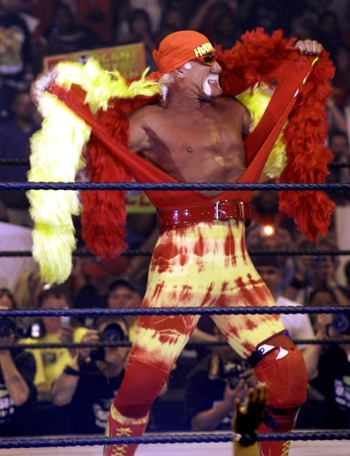
Hulk Hogan rips his shirt during a classic WWF entrance in the 1980s.
Returning to the WWF in late 1983, Hogan became the centerpiece of McMahon’s national expansion strategy. Within months, Hulkamania was born an energy-fueled blend of charisma, power moves, and crowd work that made him an instant megastar. His 1984 victory over The Iron Sheik for the WWF Championship marked the beginning of a reign that would define the decade. Hogan headlined the first-ever WrestleMania in 1985, teaming with Mr. T and facing off against Roddy Piper and Paul Orndorff in a match that fused wrestling with celebrity spectacle.
Throughout the late 1980s, Hogan defended his title against larger-than-life opponents like King Kong Bundy, Big John Studd, and André the Giant the latter of whom he famously body-slammed at WrestleMania III before a reported crowd of 93,000 at the Pontiac Silverdome. That moment remains one of the most replayed clips in wrestling history. As Hogan’s profile grew, so did his reach. He starred in films like No Holds Barred, Suburban Commando, and Mr. Nanny, joining other wrestling-movie crossovers like Jesse Ventura (Predator) and Roddy Piper (They Live).
As the '90s approached, Hogan’s red-and-yellow heroism began to wear thin with younger fans seeking something edgier. After a brief hiatus, he joined World Championship Wrestling (WCW) in 1994, capturing the WCW title and helping the company rise to new heights. But the true shock came in 1996, when Hogan turned heel and formed the nWo (New World Order) with Scott Hall and Kevin Nash. Trading in his patriotic image for black gear and sneering promos, “Hollywood Hogan” reinvented himself and revitalized his career.
The nWo storyline reshaped modern wrestling and led to years of dominance for WCW in the Monday Night Wars against WWF. Hogan’s feuds with Sting, Goldberg, and Lex Luger during this era kept him at the top of the card, even as the industry shifted toward faster, younger stars. By the early 2000s, Hogan returned to WWE (formerly WWF) and experienced a nostalgia-fueled resurgence. Matches with The Rock at WrestleMania X8, Triple H, and even a reunion with Roddy Piper gave longtime fans a reason to cheer again.
Hogan's final wrestling appearances were largely ceremonial. He was inducted into the WWE Hall of Fame in 2005 and later appeared in sporadic hosting roles, including WrestleMania 30 alongside Stone Cold Steve Austin and The Rock. Though injuries and age kept him from competing in full matches, Hogan remained a symbolic figure often returning to deliver promos, wave the flag, or rip his shirt one last time.
From the territory days with Baron Von Raschke to his peak under stadium lights, Hogan's wrestling career spanned over four decades. He shared the ring with everyone from Randy “Macho Man” Savage to The Undertaker, from Sgt. Slaughter to Shawn Michaels. Few performers have shaped the business so thoroughly or crossed over into mainstream culture so effectively. For better or worse, Hulk Hogan didn’t just ride the wave he created it.
📺 Movie & TV Work
📺 Watch This Clip
In this rare Tonight Show appearance, Hulk Hogan sits down with Johnny Carson to discuss his breakout role in Rocky III. With his signature charm and larger-than-life energy, Hogan talks about filming the scene with Sylvester Stallone, his transition from wrestling to movies, and how the role of “Thunderlips” launched him into mainstream stardom. It’s a fascinating moment where wrestling showmanship meets Hollywood ambition.
Hulk Hogan’s charisma wasn’t limited to the wrestling ring he also made a major push into Hollywood, becoming one of the first wrestlers to successfully cross over into film and television. His big-screen debut came in 1982 with a memorable appearance as “Thunderlips” in Rocky III, trading blows with Sylvester Stallone in a high-profile charity match. The role introduced Hogan to a much wider audience and helped solidify his image as a real-life superhero.
By 1989, Hogan was starring in his own action movie, No Holds Barred, produced by the WWF itself. Though critically panned, it became a cult favorite among wrestling fans and led to more family-friendly roles in the early 1990s. He headlined Suburban Commando with Christopher Lloyd and Shelley Duvall, played a bumbling babysitter in Mr. Nanny, and battled mobsters in Santa with Muscles films that capitalized on his cartoonish strength and comedic timing.
On television, Hogan found a second wave of popularity. He starred in the syndicated action series Thunder in Paradise from 1994 to 1995, playing a high-tech vigilante patrolling the seas alongside co-star Chris Lemmon. While short-lived, the show cemented Hogan’s place in '90s pop culture and showcased his appeal to a younger audience. He also made guest appearances on shows like Walker, Texas Ranger and even voiced himself in animated programs, including Robot Chicken and American Dad!.
In the 2000s, Hulk Hogan. returned to TV in an entirely new role: reality star. Hogan Knows Best premiered on VH1 in 2005 and gave viewers a behind-the-scenes look at his home life with then-wife Linda and their children Brooke and Nick. The show was part comedy, part family drama, and part tabloid magnet catapulting the Hogan name back into headlines, both good and bad. It also launched spinoffs like Brooke Knows Best, as the family’s media presence expanded.
Though not always critically acclaimed, Hogan’s TV and movie career helped define a path that many wrestlers would later follow. From Dwayne "The Rock" Johnson to John Cena and Dave Bautista, the road between the ring and Hollywood was largely paved by Hulk Hogan shirtless, bandana-clad, and larger than life.
Hulk Hogan. once appeared on the cover of Sports Illustrated a rarity for wrestlers and helped legitimize professional wrestling as a mainstream phenomenon.
🕊️ Later Years
Summary: After multiple surgeries and semi-retirement, Hogan stayed connected through appearances, business ventures, and nostalgic tributes.
In his later years, Hulk Hogan remained a towering figure in wrestling even as his in-ring appearances slowed. After undergoing multiple back and hip surgeries, he largely stepped away from physical competition but continued to appear in WWE in various ambassador roles. Whether hosting WrestleMania or delivering nostalgic promos, Hogan’s mere presence brought a sense of history to any event he attended.
Off-screen, Hogan’s life was marked by both reflection and reinvention. He launched a handful of business ventures, including a restaurant and beach shop in Florida, and made media appearances that revisited his legacy. Legal battles and controversies tested his public image, but he eventually reconciled with the WWE and returned to their Hall of Fame spotlight in multiple roles honored not just for his achievements, but for his foundational role in the company’s global success.
As the years passed, Hogan often spoke about his faith, family, and the physical toll of wrestling. He remained close with fans and attended conventions, signings, and charity events well into his 70s. His voice, mannerisms, and catchphrases became part of wrestling folklore still quoted by generations who grew up with Hulkamania.
Hulk Hogan passed away on July 24, 2025, he was 71 years old, leaving behind a cultural legacy as one of the most recognizable and influential figures in wrestling history. His life was filled with triumph, transformation, and the kind of spectacle only he could deliver. For fans across the globe, the memories of ripped shirts, booming leg drops, and immortal promos will live forever, brother.
🏆 Legacy
Summary: Hogan transformed wrestling into mainstream entertainment, paving the way for future crossover stars and leaving behind a cultural legacy.
Hulk Hogan's legacy is nothing short of monumental. He didn't just elevate professional wrestling he redefined it. As the face of Hulkamania and the driving force behind WrestleMania’s early success, Hogan turned wrestling from regional theater into global spectacle. His matches weren’t just fights; they were events, drawing headlines, record-breaking pay-per-view numbers, and sold-out stadiums. To millions, he was the superhero who always overcame the odds, wrapped in red and yellow, preaching positivity and power.
He also proved that wrestling could cross over into mainstream culture. Hogan's work in film, television, and merchandise made him a household name long before the era of social media. He became a symbol for the 1980s a decade of excess, showmanship, and bold personalities and managed to reinvent himself in the '90s with his shocking heel turn in WCW. That reinvention, as “Hollywood Hogan,” helped usher in wrestling’s Attitude Era and inspired generations of wrestlers to evolve their personas.
While his career wasn’t without controversy, Hogan’s influence remains foundational. Superstars like Dwayne "The Rock" Johnson, Stone Cold Steve Austin, John Cena, and Roman Reigns all stand on the platform he helped build. His image, catchphrases, and legacy continue to be referenced, parodied, and celebrated both in and outside of the ring.
In the end, Hulk Hogan wasn't just part of wrestling's golden age he was the golden age. From body slamming giants to headlining global tours, he made the impossible feel possible. His name is etched in the history of sports entertainment, not just as a champion, but as the man who made millions believe in something bigger than the match.
🗣️ Why They Still Matter
Hulk Hogan’s fingerprints are all over the modern landscape of sports entertainment. He created the blueprint for the wrestling megastar, combining physical presence with media savvy and pop culture crossover appeal. Every superstar who breaks into TV or film whether The Rock, John Cena, or Dave Bautista follows a trail Hogan helped blaze. His legacy may be complex, but his influence is undeniable. Hulk Hogan remains the immortal measuring stick for what it means to be a wrestling icon.
Further Reading & Resources
📖 Hulk Hogan: Biography, WWE Wrestler, Actor, Hollywood Hogan
📰 Hulk Hogan | Height, Age, Real Name, Trump, & Facts | Britannica
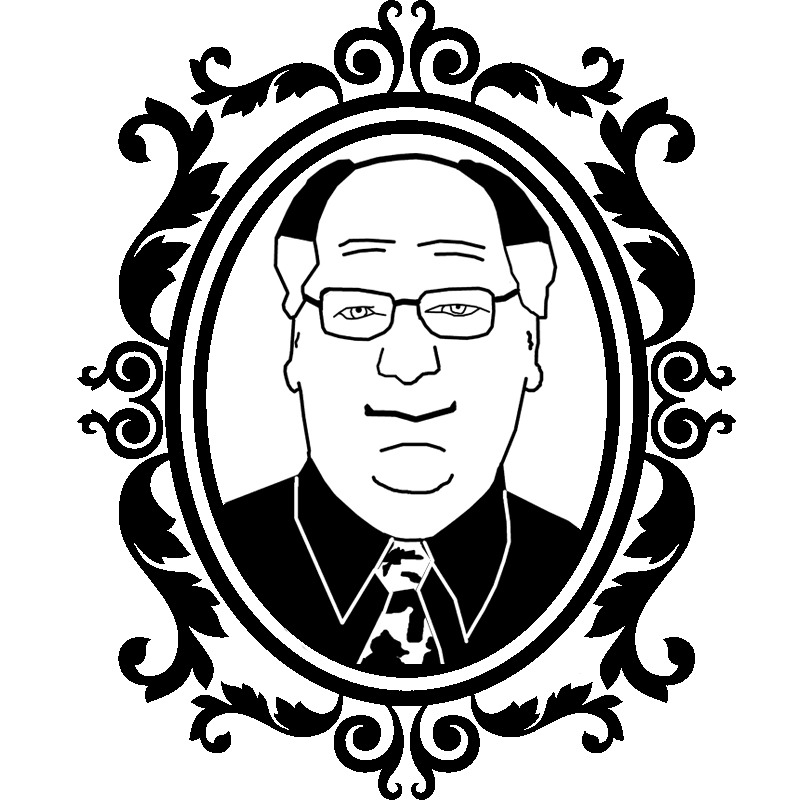
ML Lamp is the owner of Kilroy Was Here. After his 20 years of working in Las Vegas in the entertainment promotions field, Mr. Lamp retired in 2002 from his job to pursue his passion for collectibles. Now as a guest speaker and author he’s living the dream, and sharing his warmth with You.
